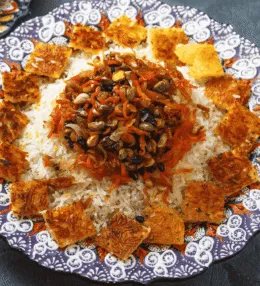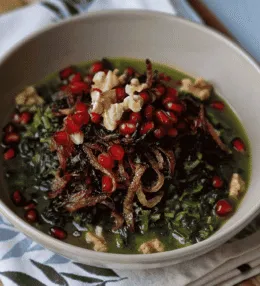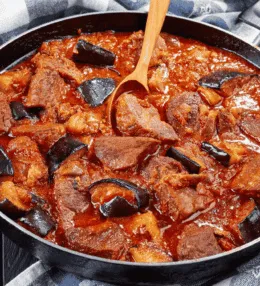
- View
Table of Contents
ToggleColombia’s love affair with arequipe runs deeper than simple sweetness. This thick, luscious caramel spread has woven itself into the fabric of Colombian life, appearing at breakfast tables, birthday celebrations, and quiet afternoon snacks with equal devotion.
Every Colombian household keeps a jar tucked away in the cupboard, ready to transform plain bread into something special or to steal a spoonful when nobody’s watching. The creamy confection holds memories of childhood treats and grandmother’s kitchen.
In Colombia, arequipe isn’t just a dessert topping. It’s a cultural touchstone that connects generations, a taste that instantly transports Colombians back home no matter how far they’ve travelled. You’ll find it sandwiched between biscuits, swirled into cakes, or simply spread thick on toast.
Walk through any Colombian market and you’ll encounter arequipe in countless forms: homemade versions sold in recycled jars, artisanal batches from small producers, and commercial brands that have become household names over decades of trusted quality.
Want to dive deeper into Colombian Cuisine? Don’t miss our post on 23 Traditional Colombian Foods to Try
What Is Arequipe?
Arequipe is Colombia’s take on dulce de leche, a thick caramel sauce made by slowly cooking milk and sugar until the mixture transforms into a smooth, spreadable consistency. The process requires patience as the ingredients gradually caramelise into golden perfection.
The texture sits somewhere between a thick sauce and a soft fudge, spreadable enough to coat bread easily yet firm enough to hold its shape when spooned. When fresh, it gleams with a silky sheen that speaks to its creamy richness.
What makes Colombian arequipe distinct from similar preparations elsewhere is its consistency and sweetness level. Colombians prefer their arequipe thick and deeply caramelised, with a colour that ranges from light tan to deep amber depending on cooking time.
The name itself comes from the Quechua word “ariquipe,” though some debate exists about its precise etymology. Regardless of linguistic origins, the word has become synonymous with comfort and indulgence throughout Colombia.
You’ll encounter arequipe in professional kitchens and home pantries alike. Pastry chefs use it to fill alfajores and layer cakes, whilst home cooks spread it on arepas or stir it into hot chocolate for extra decadence.
Ingredients and Taste
Traditional arequipe requires just two essential ingredients: whole milk and sugar. Some recipes include a pinch of bicarbonate of soda, which helps prevent the milk from curdling during the long cooking process and aids in achieving that smooth texture.
A touch of vanilla sometimes makes an appearance, though purists argue that proper arequipe needs nothing beyond milk and sugar. The magic happens through time and temperature rather than through elaborate ingredient lists.
The milk must be full fat for proper results. Skimmed or semi-skimmed versions simply won’t create the same luxurious mouthfeel. The fat content is essential for developing that characteristic silky texture and rich flavour.
The taste of arequipe is pure caramelised bliss. It opens with intense sweetness that never feels cloying, thanks to the complex flavours developed during the slow cooking. You’ll detect notes of toffee and butterscotch dancing beneath the primary caramel taste.
As the arequipe sits on your tongue, it melts into creamy smoothness, coating your mouth with its velvety richness. There’s a subtle dairy tang underneath all that sweetness, a reminder of the milk that forms its foundation.
The flavour deepens as you continue eating, revealing layers that weren’t immediately apparent. Each spoonful brings a satisfying sweetness that feels indulgent yet somehow comforting, like a hug from someone who wants you to feel cherished.
The consistency plays a crucial role in the eating experience. Good arequipe should spread easily without being runny, and it should never feel grainy. When you drag a spoon through it, it should leave a clean trail that slowly fills back in.
A Taste of History
Arequipe’s story begins with the Spanish colonial period, when dairy farming was introduced to South America. The technique of cooking milk with sugar to preserve it travelled across the Atlantic with European settlers during the 16th and 17th centuries.
Each Latin American country developed its own version of this preserved milk confection. Argentina and Uruguay call it dulce de leche, Mexico knows it as cajeta when made with goat’s milk, whilst Colombia claimed arequipe as its own expression.
The name “arequipe” possibly derives from Arequipa, a city in Peru, though this etymology remains contested among food historians. What’s certain is that the preparation took root in Colombian cooking and evolved into something distinctly local over centuries.
In colonial times, arequipe served a practical purpose beyond pure enjoyment. Before refrigeration, cooking milk with sugar provided a way to preserve dairy products in tropical climates where fresh milk spoiled quickly. The resulting preserve could last weeks or even months.
By the 19th century, arequipe had shifted from preservation necessity to beloved treat. Colombian families perfected their recipes, passing techniques down through generations. Each region developed slight variations in thickness, sweetness, and cooking methods.
The 20th century brought commercial production, making arequipe accessible to everyone rather than just those with time for hours of stirring. Companies like Alpina and La Lechera became synonymous with quality arequipe, their products becoming staples in Colombian homes.
Today, arequipe represents Colombian identity abroad. Expats seek it out in international shops, willing to pay premium prices for a taste of home. It has become an edible symbol of Colombian culture, as recognisable as coffee or arepas.
How to Make Arequipe (Colombian Dulce de Leche)
Arequipe is Colombia’s treasured caramel spread, smooth, glossy, and richly sweet with a depth of flavour that comes from slow, patient cooking. The process is simple but requires attention and stirring, rewarding you with a silky treat that embodies traditional Colombian warmth. See the recipe card at the bottom for printable directions
Ingredients
- 1 litre whole milk
- 300 g granulated sugar
- 1 tsp bicarbonate of soda
- 1 vanilla pod, split (or 1 tsp vanilla extract)
- Pinch of salt
Cooking Instructions
Step 1: Prepare the base mixture
Pour the milk into a large, heavy bottomed saucepan to prevent scorching. Add the sugar and stir gently over medium heat until it dissolves completely. Do not allow the milk to boil at this stage.
Step 2: Add flavour and stabiliser
Stir in the bicarbonate of soda, vanilla, and a small pinch of salt. The mixture will foam slightly, which is normal. The bicarbonate helps prevent the milk proteins from curdling during the long cooking process.
Step 3: Begin the slow simmer
Lower the heat to a gentle simmer. Stir frequently using a wooden spoon or heatproof spatula, scraping the bottom of the pan to prevent sticking. Continue this for about 45 minutes, keeping the heat steady.
Step 4: Observe the transformation
As the mixture thickens and deepens in colour, stir more often to prevent burning. The milk will gradually turn a golden caramel shade, releasing a nutty, sweet aroma. Patience is key here; allow it to develop naturally.
Step 5: Test the texture
After around 1 hour and 15 minutes, test a small spoonful on a cold plate. If it holds a soft shape and spreads like thick caramel, it is nearly ready. Continue cooking if it still runs easily.
Step 6: Achieve final consistency
Once it reaches a thick, glossy texture that coats the spoon, remove it from the heat. Remember that Arequipe thickens slightly as it cools, so stop just before it reaches the final firmness.
Step 7: Strain and smooth
If you used a vanilla pod, remove it. For a perfectly smooth finish, strain the Arequipe through a fine sieve into a clean bowl. This step ensures a professional, silky result.
Step 8: Cool and store
Allow the Arequipe to cool to room temperature before transferring it to sterilised glass jars. Seal tightly and refrigerate once cooled completely.
Step 9: Serving suggestions
Serve Arequipe as a spread over toast, a filling for pastries, or a topping for ice cream and fruit. It is a classic addition to obleas (Colombian wafers).
Step 10: Presentation tip
For a charming finish, drizzle over desserts and sprinkle with a few flakes of sea salt for contrast. The subtle salt enhances the caramel notes beautifully.
Variations and Substitutions
- Vanilla: Replace the vanilla pod with a teaspoon of vanilla paste or extract if unavailable.
- Sugar: Use light brown sugar for a deeper caramel flavour.
- Milk: Full-fat cow’s milk gives the traditional richness, but goat’s milk offers a slightly tangier taste common in rural Colombian versions.
- Vegan alternative: Substitute whole milk with coconut or almond milk, though flavour and texture will differ slightly.
Cooking Tips for Perfect Arequipe
- Use a wide, heavy pan to allow even evaporation and prevent scorching.
- Constant stirring in the final stages ensures a smooth consistency.
- Do not rush the cooking; slow heating allows the sugar to caramelise evenly.
- A silicone spatula helps scrape the bottom without scratching the pan.
- To avoid crystals, make sure all sugar is dissolved before simmering.
How to Store and Reheat
Storage
Unopened arequipe can live in your cupboard for months, thanks to its high sugar content which acts as a natural preservative. Keep it in a cool, dark place away from direct sunlight and heat sources that might alter its consistency.
Once opened, arequipe needs refrigeration to maintain quality and prevent spoilage. Transfer it to an airtight container if the original packaging isn’t resealable. Glass jars work brilliantly for storage as they don’t absorb flavours or odours.
In the refrigerator, opened arequipe stays fresh for about two weeks, though it rarely lasts that long in practice. Always use a clean spoon when serving to avoid introducing bacteria that could shorten its life.
Bringing It Back to Room Temperature
Cold arequipe becomes quite firm and difficult to spread. For best results, remove it from the refrigerator about 30 minutes before serving. This allows it to soften naturally, regaining that luxurious, spreadable consistency.
If you need to use it immediately, scoop the desired amount into a microwave safe bowl. Heat it in 10 second intervals, stirring between each burst, until it reaches your preferred consistency. Be careful not to overheat, which can cause it to become runny.
Alternatively, place the sealed container in a bowl of warm water for a few minutes. This gentle warming method brings the arequipe to a more workable consistency without risking overheating or altering its texture permanently.
Freezing for Long Term Storage
Arequipe freezes beautifully for up to three months. Portion it into smaller containers or even ice cube trays for convenient single servings. This way, you can thaw only what you need without repeatedly warming and cooling the entire batch.
When you’re ready to use frozen arequipe, transfer it to the refrigerator and let it thaw overnight. Avoid thawing at room temperature, which can create condensation and affect the texture. Once thawed, stir it well to restore its smooth consistency.

Arequipe (Colombian Dulce de Leche)
Equipment
- Heavy bottomed pot
- Wooden spoon
- Sterilised jar or dish
Ingredients
- 1 litre whole milk
- 300 g granulated sugar
- 1 tsp bicarbonate of soda
- 1 vanilla pod split (or 1 tsp vanilla extract)
- Pinch of salt
Instructions
- Pour the milk into a large, heavy bottomed saucepan to prevent scorching. Add the sugar and stir gently over medium heat until it dissolves completely. Do not allow the milk to boil at this stage.
- Stir in the bicarbonate of soda, vanilla, and a small pinch of salt. The mixture will foam slightly, which is normal. The bicarbonate helps prevent the milk proteins from curdling during the long cooking process.
- Lower the heat to a gentle simmer. Stir frequently using a wooden spoon or heatproof spatula, scraping the bottom of the pan to prevent sticking. Continue this for about 45 minutes, keeping the heat steady.
- As the mixture thickens and deepens in colour, stir more often to prevent burning. The milk will gradually turn a golden caramel shade, releasing a nutty, sweet aroma. Patience is key here; allow it to develop naturally.
- After around 1 hour and 15 minutes, test a small spoonful on a cold plate. If it holds a soft shape and spreads like thick caramel, it is nearly ready. Continue cooking if it still runs easily.
- Once it reaches a thick, glossy texture that coats the spoon, remove it from the heat. Remember that Arequipe thickens slightly as it cools, so stop just before it reaches the final firmness.
- If you used a vanilla pod, remove it. For a perfectly smooth finish, strain the Arequipe through a fine sieve into a clean bowl. This step ensures a professional, silky result.
- Allow the Arequipe to cool to room temperature before transferring it to sterilised glass jars. Seal tightly and refrigerate once cooled completely.
- Serve Arequipe as a spread over toast, a filling for pastries, or a topping for ice cream and fruit. It is a classic addition to obleas (Colombian wafers).
- For a charming finish, drizzle over desserts and sprinkle with a few flakes of sea salt for contrast. The subtle salt enhances the caramel notes beautifully.
Nutrition
You May Also Like






